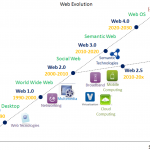Content Table:
- 1 Flash Games: A Revolution in Online Entertainment
- 1.1 The Birth of Flash Technology
- 1.2 From Animation to Interactivity
- 1.3 The Rise of Flash Games
- 1.4 Diversity in Gameplay
- 1.5 Performance Challenges
- 1.6 Advancements with Flash MX
- 1.7 Modern Flash Games: A New Era
- 1.8 Accessibility and Community
- 1.9 Benefits for Developers
- 1.10 A New Generation of Creators
- 1.11 The Future of Flash Gaming
- 1.12 Conclusion
Flash Games: A Revolution in Online Entertainment
The Birth of Flash Technology
Macromedia Flash arrived in 1996 with a vision to enhance web pages through animation and interactivity. Initially designed to add flair to otherwise static sites, developers quickly recognized the potential of Flash. As the software evolved, each new iteration introduced additional functionalities, leading to significant advancements in web-based applications and games.
From Animation to Interactivity
In the early days, Flash focused primarily on animation, with limited scripting capabilities restricting interactivity. This changed dramatically with the introduction of ActionScript in version 5. Flash transformed into a robust platform for developing engaging web-based games, allowing developers to create sophisticated applications that captivated players.
The Rise of Flash Games
By 2001, Flash games were popping up on websites everywhere. While early attempts often revolved around simple remakes of classic arcade games like Asteroids and Tempest, they quickly gained popularity among online communities. Despite their initial reputation as mere time-fillers, these games offered an addictive escape for players looking to pass the time during breaks at work or school.
Diversity in Gameplay
As developers honed their skills, a wide variety of Flash games emerged. Players enjoyed platform remakes of beloved classics such as Sonic the Hedgehog and Mario Brothers. With improved graphic capabilities, these games offered more immersive gameplay experiences. While PC and console games dominated the market, Flash games established themselves as integral components of many online communities. Flash arcades integrated into popular forums fostered friendly competition, with players striving to achieve top scores.
Performance Challenges
Despite their popularity, Flash games faced performance challenges, particularly on lower-spec machines. Originally, Flash was not designed specifically for gaming, which sometimes resulted in slower performance and choppy gameplay. However, the release of Flash MX in 2004 marked a significant turning point.
Advancements with Flash MX
With Flash MX came ActionScript 2.0, offering greater control over Flash applications and improved data handling. This enhancement allowed developers to implement levels and scoreboards more effectively, boosting the appeal of Flash games across various genres, from arcade classics to first-person shooters and racing games.
Modern Flash Games: A New Era
Since the release of Flash MX, the quality of Flash games has skyrocketed. Today’s titles are a far cry from the blocky, slow-loading games of the past. Classics like Stick Cricket, Bejeweled, and Yeti Sports remain immensely popular, attracting thousands of players daily. The combination of playability and clever execution has solidified these games’ status as some of the most beloved in online gaming history.
Accessibility and Community
The landscape for finding and playing Flash games has also evolved. Players no longer need to search individual developer websites for new titles. Instead, developers submit their games to massive Flash game websites that host thousands of games for free. One example is itsall3.com, which offers a wide array of free games and entertaining content.
Benefits for Developers
Submitting games to these large platforms benefits developers in multiple ways. High traffic on these arcade sites increases visibility, providing more hits for developers without incurring bandwidth costs. Additionally, these sites often include links back to the developers’ websites, facilitating further engagement.
A New Generation of Creators
The enthusiasm of today’s game developers mirrors the spirit of early 1990s programmers who thrived on languages like BASIC. The arrival of Flash has reignited that creativity, allowing for relatively easy game creation. While Flash’s scripting capabilities differ from traditional programming, the accessibility of game development has contributed to its success.
The Future of Flash Gaming
As Adobe (formerly Macromedia) continues to develop Flash, the focus may shift more towards game creation or remain centered on animation and web applications. Regardless, Flash games have solidified their place in the digital landscape and will likely continue to evolve. With upcoming versions in development, it will be exciting to see what innovations the next generation of Flash games will bring.
Conclusion
Flash games have transformed online entertainment, providing players with accessible and engaging experiences. As technology advances and game development tools improve, we can expect even more creativity and innovation in this space. Whether you’re a seasoned gamer or a newcomer, there’s no denying the impact of Flash games on the online gaming community.



